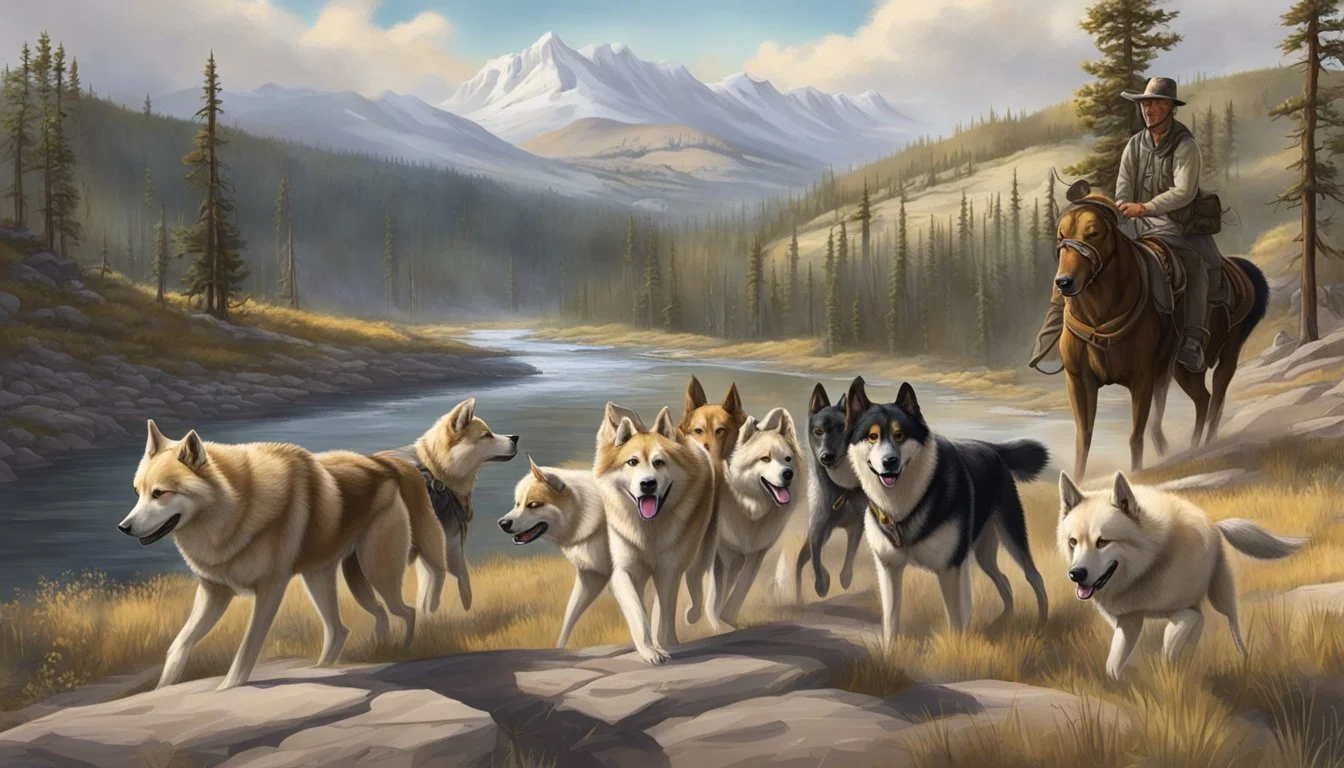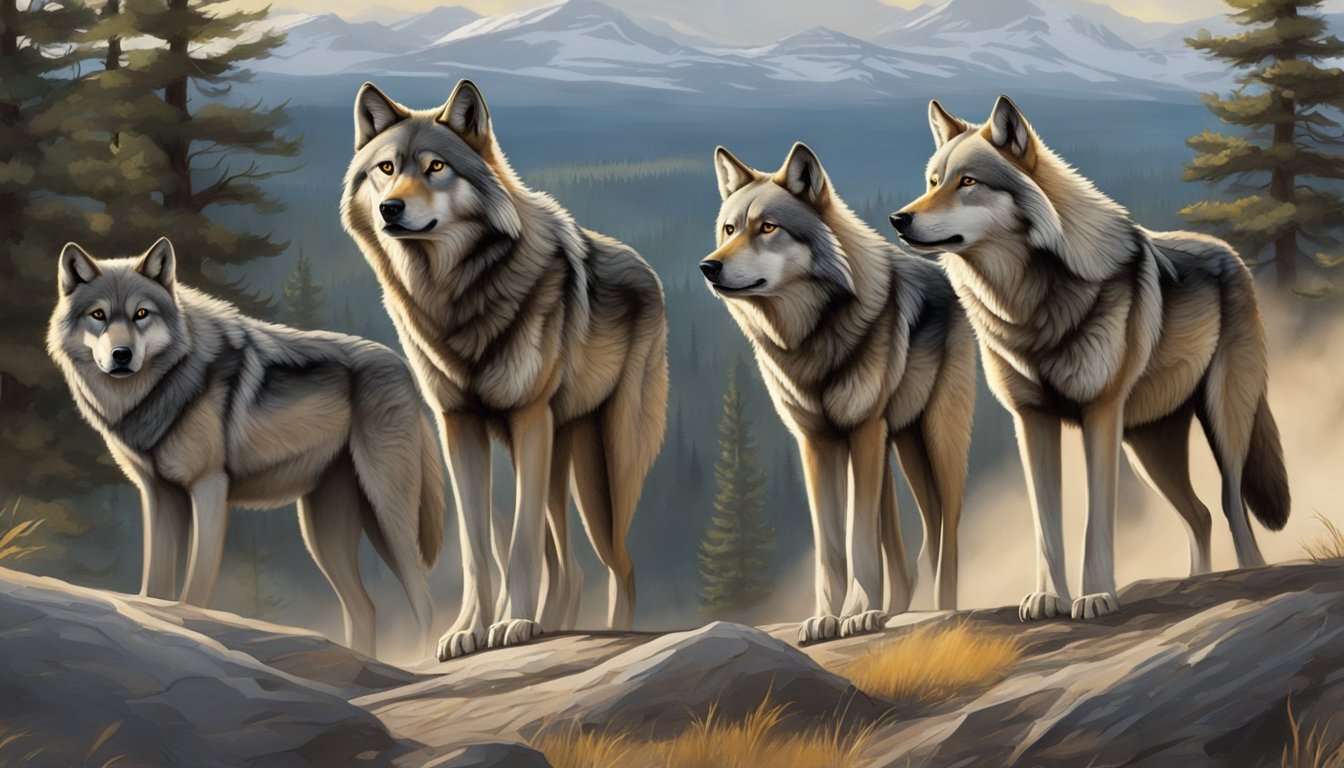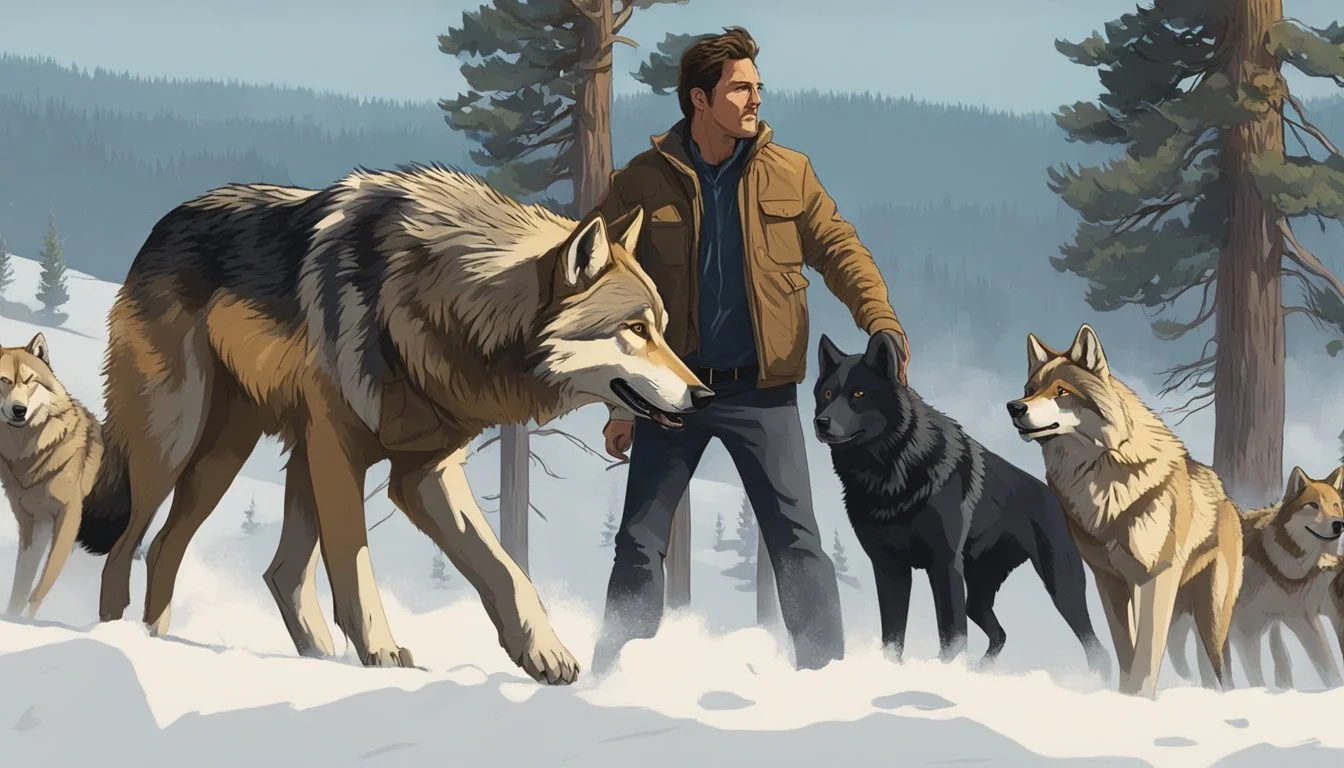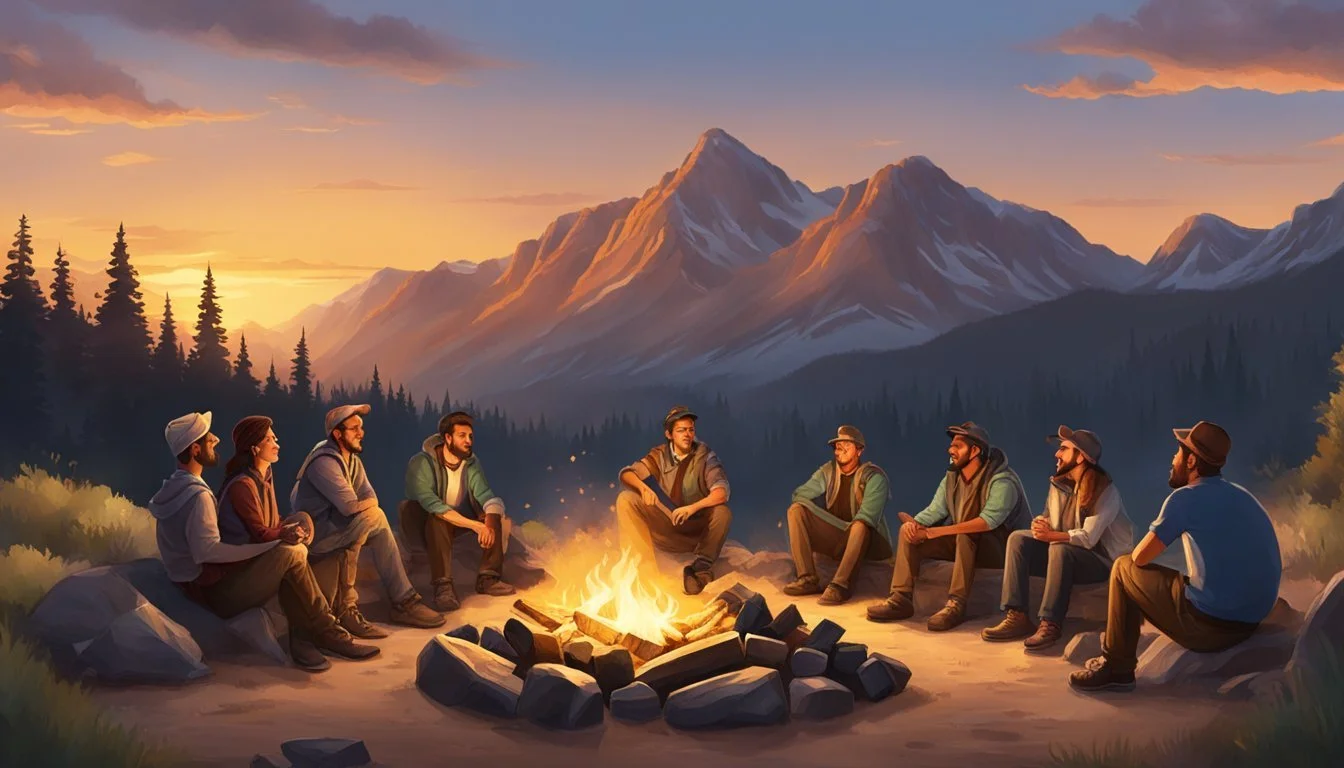Shocking Twist in Yellowstone Show as Wolves Are Killed on Dutton Ranch
The hit TV series Yellowstone has captivated audiences with its gripping storylines, including a recent plot involving wolves on the Dutton ranch. In Season 5, a controversial incident unfolds when ranch hands Ryan and Colby encounter and kill wolves on the property.
The killing of these wolves sets off a chain of events that threatens to bring serious consequences for John Dutton and his operation. As protected animals, the death of wolves on the ranch raises legal and environmental concerns, adding another layer of complexity to the Duttons' already precarious situation.
This storyline draws parallels to real-life wolf conservation efforts in Yellowstone National Park, where wolves play a crucial role in the ecosystem. The show's exploration of human-wildlife conflict reflects ongoing debates surrounding land use, ranching, and wildlife management in the American West.
Overview of Yellowstone Series
Yellowstone is a popular Western drama series that has captivated audiences with its intense storytelling and stunning visuals. The show explores themes of family, power, and conflict in the modern American West.
Creation and Success
Yellowstone premiered on Paramount Network in 2018, created by Taylor Sheridan and John Linson. The series quickly gained a dedicated following, becoming one of the most-watched cable TV shows in the United States. Its success led to multiple spin-offs, including the prequel series 1923.
Yellowstone's popularity stems from its compelling blend of classic Western elements and contemporary issues. The show's high production values and star-studded cast, led by Kevin Costner, contribute to its appeal.
Plot and Setting
Set in Montana, Yellowstone revolves around the Dutton family, who own the largest contiguous ranch in the United States. The series depicts their struggles to maintain control of their land amid external pressures from developers, Native American reservations, and the nearby Yellowstone National Park.
The show's backdrop showcases the breathtaking landscapes of Montana and Utah, where much of the filming takes place. This setting plays a crucial role in the narrative, often serving as a character itself.
Central Characters
At the heart of Yellowstone is John Dutton, portrayed by Kevin Costner. As the patriarch of the Dutton family, John fiercely protects his land and legacy. His children - Beth, Jamie, and Kayce - each play significant roles in the family's affairs and conflicts.
Other key characters include Rip Wheeler, the loyal ranch foreman, and Thomas Rainwater, the nearby Native American reservation's chairman. These characters, along with a diverse supporting cast, create a complex web of relationships and rivalries that drive the show's plot forward.
Canine Characters and Their Role in Yellowstone
Wolves play a significant part in the Yellowstone TV series, serving as both literal and symbolic elements. Their presence impacts the characters and storylines in meaningful ways.
Depiction of Wolves in the Show
Wolves appear as both wild animals and metaphorical figures in Yellowstone. The series portrays them as powerful, intelligent creatures that roam the wilderness surrounding the Dutton ranch. In Season 5, wolves take on a more prominent role, with several scenes showing wolf packs in their natural habitat.
The show depicts interactions between wolves and livestock, highlighting the ongoing conflicts between ranchers and wildlife. These encounters often lead to tense situations and difficult decisions for the characters.
Yellowstone also showcases the beauty and grace of wolves through stunning cinematography, capturing their movements and behaviors in the wild.
Symbolism and Plot Significance
Wolves in Yellowstone symbolize the untamed nature of the land and the constant struggle between civilization and wilderness. They represent both a threat to the ranchers' way of life and a vital part of the ecosystem.
The presence of wolves often foreshadows danger or conflict in the plot. Their howls and appearances create an atmosphere of tension and unpredictability. In Season 5, a wolf-related incident becomes a major plot point, affecting multiple characters and storylines.
Wolves also serve as a metaphor for the characters themselves, particularly the Dutton family. Like wolves, the Duttons are fierce, loyal to their pack, and willing to fight to protect their territory.
Wolves in Reality
Gray wolves play a complex role in Yellowstone National Park's ecosystem. Their presence impacts wildlife populations and vegetation patterns. Conservation efforts and legal protections have helped restore wolf numbers, but management remains controversial.
Wolf Conservation Efforts
Wolf reintroduction to Yellowstone began in 1995. The program aimed to restore ecological balance after wolves were eradicated in the early 1900s. Since then, the wolf population has grown to over 90 individuals in about 8 packs.
Wolves have significantly impacted elk populations and behavior. This has allowed vegetation to recover in some areas, benefiting other species. However, ranchers outside the park remain concerned about livestock predation.
Yellowstone's wolf packs have become famous attractions. Visitors can often spot them in the Lamar Valley.
Protected Wolves and Legal Challenges
Gray wolves are protected under the Endangered Species Act in most of the lower 48 states. This prohibits hunting and trapping in those areas.
However, wolves were delisted in Montana, Idaho, and Wyoming. These states now manage their own wolf populations through regulated hunting seasons.
Legal battles continue over wolf protections. Conservation groups have filed lawsuits to restore federal protections in some regions. They argue state management threatens wolf recovery.
Wildlife Management in Montana, Idaho, and Wyoming
These states have implemented wolf hunting and trapping seasons since delisting. They aim to reduce conflicts with livestock and maintain sustainable wolf populations.
Montana's 2021 wolf harvest quota was 450 animals. Idaho removed most wolf hunting restrictions in 2021. Wyoming classifies wolves as predators in most of the state, allowing unrestricted hunting.
Critics argue aggressive wolf control threatens connectivity between populations. Supporters say it's necessary to protect ranching interests and big game herds.
State wildlife commissions set quotas and regulations. They must balance conservation with other stakeholder concerns.
Notable Events in Recent Seasons
The Yellowstone series continued to captivate audiences with intense drama and shocking plot twists in its latest seasons. Key characters faced new challenges and threats to their power and way of life.
Season 4 Recap
Season 4 opened with the aftermath of the attacks on the Dutton family. John Dutton survived his shooting and sought revenge against those responsible. Beth suffered severe burns but emerged more ruthless than ever.
Kayce and Monica's relationship was tested as they dealt with the trauma. Jamie discovered his biological father's identity, complicating his loyalties further.
The season climaxed with Beth orchestrating Jamie's downfall and John becoming governor of Montana. This shift in power dynamics set the stage for major conflicts in Season 5.
Season 5 Developments
John Dutton's governorship brought new challenges as he balanced political responsibilities with protecting his ranch. His policies angered developers and environmental groups alike.
Beth took on a larger role managing Dutton affairs, clashing with Market Equities and other business rivals. Her tactics became increasingly aggressive and controversial.
Kayce and Monica faced a devastating personal loss that strained their marriage. This tragedy had ripple effects throughout the family.
Jamie found himself caught between his biological father and the Duttons, forced to make difficult choices about his allegiances. His actions had far-reaching consequences for Montana's political landscape.
Key Characters Impacting the Yellowstone Storyline
The Dutton family and their associates drive the compelling narrative of Yellowstone. Their complex relationships and personal struggles shape the show's dramatic plot.
Dutton Family Dynamics
John Dutton, the family patriarch, fiercely protects the Yellowstone ranch. His children - Beth, Jamie, and Kayce - play crucial roles in the family's affairs.
Beth, John's daughter, is known for her sharp wit and ruthless business tactics. She often clashes with her adoptive brother Jamie, creating tension within the family.
Kayce, the youngest son, balances his loyalty to the ranch with his love for his wife Monica and their son Tate. This conflict frequently puts strain on his relationships.
New and Returning Faces
Season 5 introduced new characters while bringing back familiar ones. These additions and returns shook up existing dynamics on the ranch.
Jimmy, a former Yellowstone cowboy, made appearances in Season 5. His storyline hinted at potential developments in Texas, possibly setting up a spin-off series.
The show also explored the impact of outsiders on the Dutton family's world. These new faces often challenge the established order at Yellowstone.
Character Growth and Story Arcs
Each main character in Yellowstone undergoes significant development throughout the series. Their personal journeys contribute to the show's depth and appeal.
Kayce's growth is particularly notable. He struggles to reconcile his Native American heritage with his role in the Dutton family.
Beth's complex relationship with Rip Wheeler evolves over time, revealing softer aspects of her typically tough exterior.
Jamie's internal conflicts and quest for acceptance drive many of the show's most dramatic moments. His actions often have far-reaching consequences for the entire family.
Yellowstone's Influence on Public Perception of Wolves
The reintroduction of wolves to Yellowstone National Park in 1995 dramatically shifted public perception of these apex predators. This landmark conservation effort brought wolves back into the spotlight after decades of absence.
Yellowstone's wolf program garnered significant media attention, sparking public interest and debate. As visitors flocked to the park hoping to glimpse the wolves, many developed a newfound appreciation for their ecological role.
Research conducted in Yellowstone revealed the wolves' impacts on the ecosystem. Studies showed how wolf predation affected elk populations and vegetation patterns. These findings helped reshape scientific understanding of predator-prey dynamics.
The visibility of Yellowstone's wolves through documentaries and nature programs exposed millions to their behavior and social structures. This coverage often portrayed wolves in a more positive light than traditional depictions.
Key impacts on public perception:
Increased awareness of wolves' ecological importance
Greater understanding of wolf behavior and pack dynamics
Shift from viewing wolves as villains to vital components of nature
Growing support for wolf conservation efforts
Despite these changes, controversy persists. Ranchers near Yellowstone continue to express concerns about livestock predation. Some hunters worry about competition for game animals.
Yellowstone remains central to ongoing debates about wolf management. The park serves as a living laboratory, shaping policies and public attitudes toward wolves across North America.
Cultural and Socio-economic Impact
The hit TV show Yellowstone has sparked discussions about land use, conservation, and economic development in the American West. Its portrayal of conflicts between ranchers, developers, and environmentalists reflects real-world tensions.
Yellowstone's Impact on Montana's Paradise Valley
Paradise Valley, the picturesque setting for much of Yellowstone, has seen increased tourism and real estate interest since the show's debut. Property values have risen sharply, with some locals expressing concern about being priced out of their communities.
The influx of visitors has boosted local businesses, particularly in hospitality and outdoor recreation. However, this growth has also strained infrastructure and natural resources.
Ranchers in the area report mixed feelings about the show's impact. Some appreciate the attention to their way of life, while others worry about outsiders romanticizing and potentially threatening their livelihoods.
Market Equities and Land Deals
The fictional Market Equities corporation in Yellowstone mirrors real-world tensions between development and preservation. Large-scale land acquisitions by wealthy outsiders have become a contentious issue in Montana and other Western states.
These deals often promise economic benefits through job creation and increased tax revenue. Critics argue they can lead to overdevelopment and loss of traditional land use.
The show highlights the complex negotiations and power dynamics involved in such transactions. It raises questions about who should control vast tracts of land and how to balance progress with preservation.
The Role of Leadership in Environmental Policy
Yellowstone showcases the critical role of leadership in shaping environmental policy. The character of Governor Lynelle Perry demonstrates how state-level decisions can impact local communities and ecosystems.
Executive orders, as portrayed in the show, can have far-reaching consequences for land use and conservation efforts. These actions often face legal challenges and public scrutiny.
The fictional CEO Caroline Warner represents corporate interests in environmental debates. Her character illustrates how business leaders can influence policy through lobbying and economic leverage.
The show prompts viewers to consider the responsibilities of leaders in balancing economic growth with environmental stewardship.
Behind the Scenes
The wolf scenes in Yellowstone blend symbolic storytelling with technical filmmaking challenges. Capturing these powerful moments required careful planning and execution from the cast and crew.
Production Insights
Filming wolf scenes for Yellowstone presented unique challenges. The production team used a combination of real wolves and CGI to create realistic interactions. Trained animal handlers worked closely with the actors to ensure safety on set.
The iconic wolf encounter with Kayce Dutton was filmed in Paradise Valley, Montana. Special camera techniques were employed to capture the intensity of the moment without endangering the cast or animals. Multiple takes were often required to get the perfect shot.
Showrunner Taylor Sheridan emphasized the importance of authenticity in these scenes. He worked closely with wildlife experts to portray wolf behavior accurately while serving the story's themes.
Casting and Characters
Kevin Costner's portrayal of John Dutton anchors the series, but other characters play crucial roles in the wolf storylines. Luke Grimes, who plays Kayce Dutton, underwent extensive preparation for his character's spiritual journey involving wolves.
The casting team sought actors who could convey complex emotions without dialogue during wolf encounters. This was especially important for Kayce's vision quest scenes.
Governor Lynelle Perry, played by Wendy Moniz, factors into the political aspects of wolf management in the show. Her character navigates the delicate balance between ranchers' concerns and wildlife conservation.
Supporting characters like the ranch hands and Landman also contribute to the wolf plotlines, adding depth to the ecological and legal aspects of the story.







